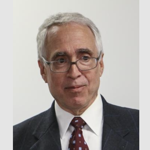![]()
ice President Gore's National Performance Review, now moving into its second year, has already earned a place in history as the most important management reform undertaking since the first Hoover Commission in 1949. Certainly, Gore and his NPR team deserve an "A+ for effort," as Donald Kettl, author of a recent report on the NPR, has said. Kettl is also on the mark when he awards the endeavor an "I" for "Incomplete."
Alas, Gore's report also deserves a "D," for Ducking one key management problem: the excessive number of political appointees gumming up the gears of agency decision-making and action.
Despite some impressive first-year wins, the Gore effort still has a long way to go before it matches the 70 percent success rate of the first Hoover Commission. Success 45 years ago came in part because the President had the authority to reorganize the executive branch without resort to new legislation. However, even with that authority, which Congress should renew, two major problems stand in the way of Gore's endeavor, each of them worth a full-court press by the Vice President (though not so energetic, one hopes, as to require his undergoing further surgery).
What Streamlining Means
The first is the absence of a working definition of streamlining. The President says agencies must streamline, and Congress required it by writing a 272,000-employee cutback into law. The problem seems to be that most agencies don't know how to do it. So far, most have defined streamlining as little more than downsizing. In an ideal world, streamlining would start with tough conversations about agencies' missions. Questions about "why we exist" and "what we do" would lead to answers about "who is essential." Only employees and processes that actively contribute to the achievement of an agency's mission would stay. Agencies would allocate cuts based on the broad aims of the Gore report. Serving customers would dictate where the cuts hit; first on the list would be the "control" personnel in procurement, personnel and budget offices. The hierarchy would flatten naturally as middle- and senior-level positions fell by the wayside as unessential to program delivery. Resources would flow downward to the front-line, where new service standards demand more staff.
Alas, nothing comes naturally in a complex government, as University of Wisconsin political scientist Kettl amply illustrates in his Aug. 19 report on the NPR for the Brookings Institution's Center for Public Management. With or without a working definition of streamlining, government is being downsized. It will surely be smaller as a result, and it will likely be able to move faster, what with the relaxation of internal rules. Whether it will be more effective is still an open question.
Political Plethora
The second problem the Gore team must address is the vexing question of political appointees. The prevailing wisdom has been that 3,000 appointees really can't be all that bad. After all, they are but a tiny fraction of the total federal workforce.
The trouble is that appointees account for much more than a tiny fraction of the management layers between the top and bottom of government. They are a serious part of the "thickening" problem Gore sees in federal hierarchies. They micro-manage just as much as Congress, and create just as much make-work. Too many are just there to punch a ticket en route to a better job in the lobbying community, and some, as White House counsel Lloyd Cutler noted in his Whitewater report, are having too many meetings on too many topics they shouldn't be talking about.
In my upcoming book, Thickening Government: Federal Hierarchy and the Diffusion of Accountability (Brookings/Governance Institute, 1995), I examine 13 different federal occupations in my home state of Minnesota -- including air traffic controllers, Social Security claims reps, VA hospital nurses, weather forecasters and food inspectors. My research shows that people in these jobs in Minnesota have a staggering number of layers between them and their department Secretary's desk in Washington. There are 58 stops on average before a policy directive finally makes it down from Washington, and even more for budget decisions.
Some of the thickening occurs because of middle-level duplication in headquarters, where Gore aims to streamline; some because of the regional office system, itself an anachronism given new information technologies for linking the field to Washington. But at least one-fifth of the stops occur because of political appointees at the very top of government. That's an awfully large share for such a small group of people.
As for empowerment, most of the key policy and budget decisions are made well above the front-line unit, be it a veterans hospital, a customs inspection station, a national forest outpost or a trade office. Of the myriad policy and budget stops between the top and bottom of government, just one in ten resides in the front-line units. Front-line employees may implement the policies and spend the dollars, but they account for but a fraction of the decision-making hierarchy.
There is no magic number of appointees for government -- although the Volcker Commission on the Public Service in 1989 recommended one-third less as a first step. Nor should all decisions be made at the bottom. There is a legitimate role for middle managers and senior political appointees. At the same time, we should ask whether we really need 10 or 12 layers of political appointees in our departments in order to assure accountability. It may be that the more political leadership we add, the less true accountability the President gets.
NEXT STORY: Re-Entering the Job Market







